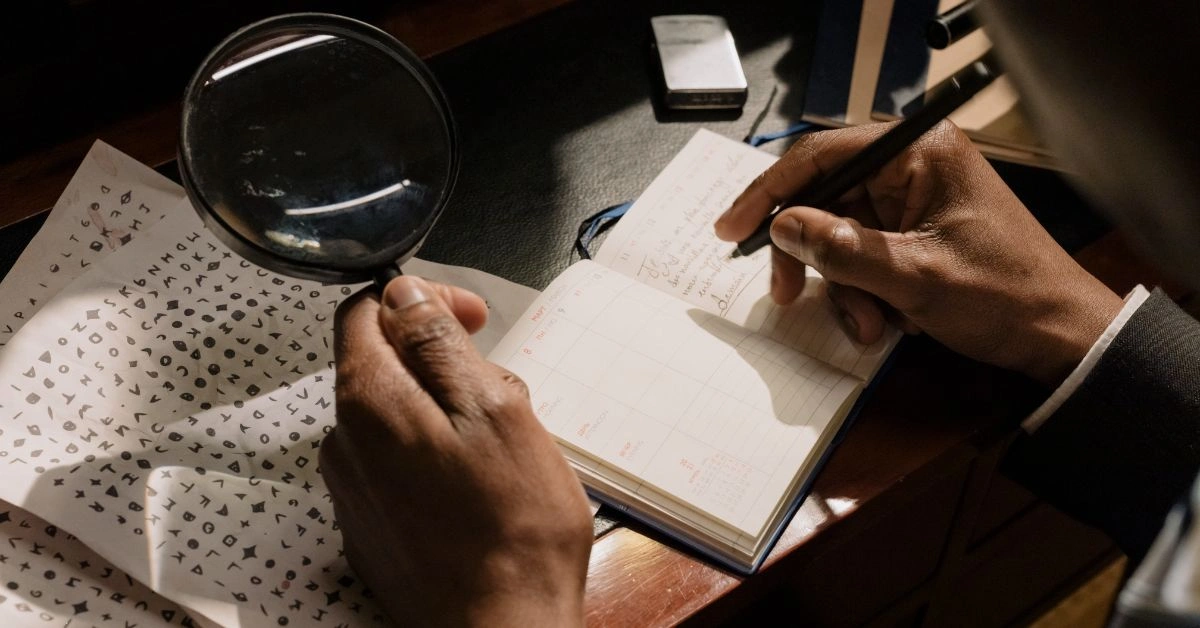Decipher the Code: ZPV BSF BXFTPNF Revealed.
Codes and ciphers have fascinated people for centuries. From ancient scripts to modern puzzles, they challenge us to think differently and uncover hidden meanings. One such intriguing puzzle is the phrase “ZPV BSF BXFTPNF.”
At first glance, this string of letters seems like a random jumble. But with a little effort, it reveals a meaningful message: “YOU ARE AWESOME.” This phrase is decoded using a substitution cipher, a simple yet clever method of encrypting text.
Substitution ciphers have a rich history. Julius Caesar famously used them to send secret military messages, giving rise to the term “Caesar cipher.” Today, these ciphers are still used in games, education, and even some basic encryption methods.
Decoding a cipher like this is not just fun—it’s also an exercise in critical thinking. It requires recognizing patterns, applying logical steps, and verifying results. The process is both intellectually satisfying and highly rewarding.
Understanding how to solve puzzles like “ZPV BSF BXFTPNF” is a great starting point for anyone interested in cryptography. This blog will guide you through the process step by step, making it easy to follow. By the end, you’ll know how substitution ciphers work and why they remain relevant today.
Whether you’re a puzzle enthusiast or just curious about codes, this journey into cryptography promises to be exciting. Let’s dive in and uncover the secrets behind this simple yet powerful cipher!
| Aspect | Facts | Figures |
|---|
| Introduction to Codes | Codes and ciphers challenge us to think differently and uncover hidden meanings. | Phrase: “ZPV BSF BXFTPNF” = “YOU ARE AWESOME” |
| History of Substitution Ciphers | Substitution ciphers date back to ancient times; Julius Caesar used them for military messages. | Introduced around 100 BCE by Julius Caesar. |
| Definition of Substitution Cipher | Each letter in the original message is replaced by another according to a specific rule. | Example: “A becomes B, B becomes C” in a Caesar cipher. |
| Types of Substitution Ciphers | Common types include the Caesar cipher (fixed shifts) and ROT13 (shifts letters by 13 places). | Example: Caesar cipher with shift of 1: Z → Y. |
| How Substitution Ciphers Work | Letters are shifted by a fixed number in the alphabet to create an encoded message. | Decoded phrase: “YOU ARE AWESOME.” |
| Applications | Used in education, puzzles, games, and basic encryption methods. | Tools: Online decoders, apps for faster decoding. |
| Skills Developed | Enhances critical thinking, pattern recognition, problem-solving, and logical reasoning. | Intellectual satisfaction from solving puzzles. |
| Step-by-Step Decoding Process | – Identify cipher type. – Understand shift rule. – Decode each letter. – Verify results. | Example: Z → Y, P → O, V → U for the given cipher. |
| Modern Uses | Despite advanced encryption, substitution ciphers are popular in games, classrooms, and recreational puzzles. | Examples: Escape rooms, treasure hunts. |
| Importance in Cryptography | Provides a foundation for understanding encryption techniques; encourages logical thinking and problem-solving skills. | Simplicity makes it an excellent teaching tool. |
| Why They’re Fun and Relevant | Hidden messages bring joy and intrigue; decoding inspires curiosity and creativity. | Message: “YOU ARE AWESOME” as a motivational boost. |
| FAQs | – What is a substitution cipher? – How does it work? – Are they still used today? | FAQ insights: Used in education, games, and more. |
Understanding Substitution Ciphers
What is a Substitution Cipher?
A substitution cipher is one of the oldest methods of encrypting text. In this cipher, each letter in the original message is replaced with another letter according to a specific pattern or rule. The result is a coded message that can only be understood by someone who knows how to decode it.
A Quick History of Substitution Ciphers
Substitution ciphers have been around for thousands of years. Julius Caesar used them to send secret military messages, which is why one of the most famous types is called the Caesar cipher. These ciphers have evolved over time, but their core principle of replacing letters has remained the same.
How Does a Substitution Cipher Work?
The process is simple. First, you decide on a rule to replace letters. For example, in a Caesar cipher, each letter is shifted a certain number of places in the alphabet. If the rule is “shift by 1,” then A becomes B, B becomes C, and so on.
Why Are Substitution Ciphers Useful?
Substitution ciphers were originally used to keep messages private. While modern encryption is much more complex, simple ciphers are still used today. They are popular in puzzles, games, and as educational tools to teach basic cryptography concepts.
Common Types of Substitution Ciphers
One of the most common is the Caesar cipher, where letters are shifted by a fixed number. Another is the ROT13 cipher, which shifts letters by 13 places. Each type has its own pattern and rules, but the goal is always the same: to create a hidden message.
Understanding substitution ciphers is the first step in solving encoded messages like “ZPV BSF BXFTPNF.” In the next section, we’ll dive into the step-by-step process to crack this specific puzzle!
Step-by-Step Guide to Solving the Puzzle
Step 1: Recognize the Cipher Type
The first step is to identify the type of cipher used. “ZPV BSF BXFTPNF” is a simple substitution cipher, specifically a Caesar cipher. In this case, the letters have been shifted by one position backward in the alphabet.
Step 2: Understand the Shift Rule
In a Caesar cipher, letters are shifted by a fixed number of positions. Here, the rule is to shift each letter back by one. For example, Z becomes Y, P becomes O, and so on.
Step 3: Decode Each Letter
Start decoding the message one letter at a time:
- Z becomes Y
- P becomes O
- V becomes U
Repeat this for each word:
- B becomes A
- S becomes R
- F becomes E
Continue until the entire message is decoded:
- B becomes A
- X becomes W
- F becomes E
- T becomes S
- P becomes O
- N becomes M
- F becomes E
The result is: “YOU ARE AWESOME.”
Step 4: Verify the Decoded Message
After decoding, always double-check the result. In this case, the message makes sense and confirms the decoding is correct. This step ensures no errors occurred during the process.
Tools to Simplify Decoding
You can decode messages manually, as we just did, or use online tools for faster results. Many free websites and apps are available to help decode substitution ciphers. These tools are especially useful for more complex ciphers.
With these steps, you’ve successfully solved the puzzle! In the next section, we’ll explore why simple codes like this still matter today.
The Broader Significance of Simple Codes
Why Simple Codes Still Matter
Simple codes like substitution ciphers may seem outdated, but they have many uses. They are great for teaching basic cryptography concepts and introducing people to codebreaking. Even in today’s digital world, they remain a fun and educational way to explore encryption.
Applications in Education and Entertainment
Substitution ciphers are often used in classrooms to teach problem-solving and logical thinking. Teachers use them to make learning about letters, patterns, and logic more engaging. They are also popular in escape rooms, treasure hunts, and puzzles, adding an element of challenge and excitement.
Building Critical Thinking Skills
Decoding a cipher requires focus, attention to detail, and creativity. It trains your brain to look for patterns and think systematically. These skills are valuable not just in puzzles but also in real-world problem-solving.
The Joy of Hidden Messages
There’s something special about uncovering a hidden message. It’s like finding a secret that was waiting just for you to discover. Positive messages like “YOU ARE AWESOME” can uplift and inspire, making the decoding process even more rewarding.
Modern Relevance of Substitution Ciphers
While advanced encryption is used for security today, simple ciphers still play a role. They’re used in games, team-building exercises, and even casual communication. Their simplicity makes them accessible and enjoyable for people of all ages.
Simple codes may not protect top-secret information anymore, but they continue to bring joy, learning, and inspiration. In the next section, we’ll wrap up with some final thoughts and tips for aspiring codebreakers.
Conclusion
Substitution ciphers, such as the Caesar cipher, have a long and fascinating history. Though they may seem simple in today’s digital age, they remain a valuable tool for learning and entertainment. The process of decoding these ciphers encourages critical thinking, pattern recognition, and problem-solving skills. Whether used in classrooms, puzzles, or games, simple codes offer a fun way to explore cryptography and uncover hidden messages.
Even though modern encryption methods are far more complex, the simplicity and accessibility of substitution ciphers continue to captivate people of all ages. As we’ve seen, these codes are not just about hiding messages—they are about engaging with logic, enjoying the thrill of discovery, and developing skills that transcend the world of cryptography.
For anyone interested in cryptography or just looking for a fun challenge, substitution ciphers offer a rewarding experience. By understanding how they work and practicing decoding techniques, you can gain deeper insights into the world of codes and ciphers. Keep exploring, stay curious, and never stop learning!
FAQs
What is a substitution cipher?
A substitution cipher is a type of encryption where each letter in the original message is replaced with another letter according to a specific rule. It’s one of the oldest methods of encoding messages.
How does the Caesar cipher work?
In a Caesar cipher, each letter of the alphabet is shifted by a fixed number of positions. For example, a shift of 1 means A becomes B, B becomes C, and so on. The key to decoding is knowing the shift value.
Are substitution ciphers still used today?
Yes, substitution ciphers are still used in puzzles, games, and educational settings. They are often used to teach basic cryptography concepts and logical thinking.
How do I decode a message using a substitution cipher?
To decode a message, you need to understand the rule or pattern that was used to encode it. For example, if each letter was shifted by 1, you would shift each letter of the coded message back by one position in the alphabet.
Can substitution ciphers be cracked easily?
While simple substitution ciphers can be cracked relatively easily with practice, more complex variations and larger shifts can make them harder to decode. However, they are still considered less secure compared to modern encryption methods.
Why are substitution ciphers important in cryptography?
Substitution ciphers are important in the history of cryptography as they laid the foundation for more advanced encryption techniques. They also offer an accessible way for beginners to learn about cryptography and develop problem-solving skills.
How can I practice solving ciphers?
There are many online tools and apps available that allow you to practice solving substitution ciphers. You can also try creating your own ciphers and challenge others to decode them!





